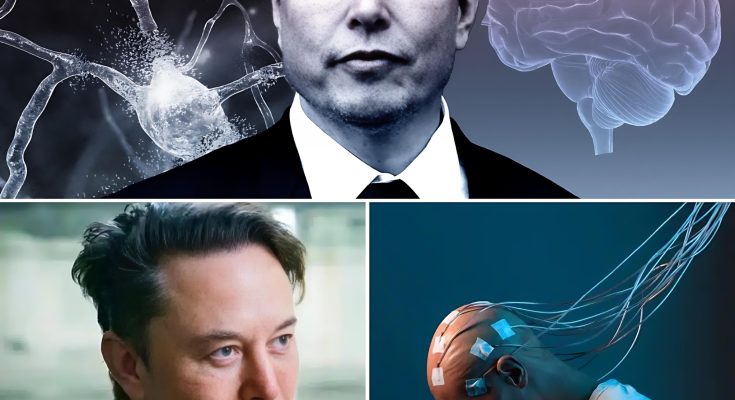Elon Musk is widely recognized as one of the most audacious and visionary entrepreneurs of the modern era, with groundbreaking ventures spanning electric vehicles, space exploration, and brain-computer interfaces.Among his most ambitious undertakings is Neuralink, a neurotechnology company dedicated to developing advanced brain-machine interfaces that aim to integrate artificial intelligence directly with the human brain.Musk’s goal with Neuralink is twofold: to unlock unprecedented cognitive enhancements and to steer the trajectory of AI development toward safe and ethical outcomes. However, as Neuralink advances, it raises profound technical challenges and deep ethical dilemmas that demand careful scrutiny and public discourse.Musk’s founding of Neuralink stems from his well-publicized concerns about artificial intelligence’s potential risks. Unlike many tech pioneers who focus primarily on AI’s commercial or technological benefits, Musk has repeatedly warned of AI’s existential dangers if left unchecked.Neuralink embodies his belief that humanity must proactively engage with AI development to ensure it remains aligned with human values and safety. The company’s mission to create a seamless interface between minds and machines reflects a unique strategy: rather than competing against AI, humans should merge with it to stay relevant and in control.At the core of Neuralink’s technology are ultra-thin, flexible electrodes capable of being implanted into brain tissue to facilitate bidirectional communication between neurons and computers. These devices, often referred to as “threads,” are designed to record neural activity with high precision and stimulate specific brain regions, potentially enabling direct thought-to-machine interaction.This could revolutionize treatment options for neurological disorders like paralysis, Parkinson’s disease, and epilepsy by restoring or augmenting lost functions. More ambitiously, Neuralink envisions enhancing normal cognitive abilities—improving memory, processing speed, and sensory experiences—thereby fundamentally transforming human potential.Despite the tantalizing promise, the technical hurdles Neuralink faces are immense and multifaceted. The human brain is an extraordinarily complex organ with billions of neurons firing in intricate patterns. Developing hardware that is safe for implantation, durable within the harsh biological environment, and capable of capturing meaningful signals amidst this complexity is a monumental challenge.Moreover, the process must minimize immune system rejection and long-term tissue damage, demanding advances in biocompatible materials and surgical techniques. The company must also design robust signal processing and decoding algorithms to interpret neural data accurately, an endeavor requiring breakthroughs in machine learning and neuroscience.Neuralink has taken important initial steps, including public demonstrations showcasing its brain-machine interface in animals. For instance, the company revealed a pig named Gertrude implanted with the Neuralink device, transmitting real-time neural activity to a computer screen.This demonstration illustrated the feasibility of capturing neural signals non-invasively and with relatively high resolution. Yet, translating these early successes into safe, effective, and scalable human applications remains a work in progress. Clinical trials and regulatory approvals are essential steps that could take years, and their outcomes will critically shape Neuralink’s future.Alongside the technical challenges lie significant ethical considerations. The idea of merging human cognition with artificial intelligence raises questions about identity, autonomy, privacy, and societal impact.What does it mean to enhance or alter brain function artificially? How can personal neural data be protected against misuse or exploitation? Will cognitive augmentation create new social inequalities between those with access to such technologies and those without?The prospect of corporations or governments potentially controlling brain-machine interfaces adds layers of concern about surveillance, consent, and power dynamics. These issues highlight the necessity for transparent governance frameworks, public engagement, and multidisciplinary dialogue.Critics have voiced caution about Musk’s grand claims, warning that the complexities of neuroscience and AI may be underestimated. The history of brain-computer interfaces is replete with challenges, slow progress, and unexpected obstacles.Some experts caution that Musk’s ambitious timelines and optimistic projections risk inflating expectations and overshadowing the cautious, rigorous scientific approach required. Responsible innovation in this field demands balancing excitement about potential breakthroughs with humility about limitations and risks.Despite these concerns, Neuralink’s impact on public awareness and discourse around AI safety and human enhancement is undeniable. Musk’s celebrity status and outspoken advocacy have brought attention to the importance of aligning AI development with human values.Neuralink serves as a concrete example of how AI and biotechnology could intersect to shape humanity’s future, elevating conversations beyond abstract debates to tangible technological realities. This public engagement creates both opportunities and pressures for Neuralink to lead responsibly.Neuralink’s ambitions also fit within Musk’s broader vision for human progress. Like his efforts to enable Mars colonization with SpaceX or accelerate clean energy adoption with Tesla, Neuralink represents an attempt to transcend current human limitations and confront existential risks.By integrating AI with human cognition, Musk aims to ensure that humanity can thrive amid rapid technological change and emerging challenges. This grand vision encapsulates Musk’s unique blend of technological optimism, futurism, and risk tolerance.Looking ahead, Neuralink’s success or failure will have profound implications across multiple domains. In medicine, effective brain-machine interfaces could revolutionize treatments and improve quality of life for millions.In technology, such interfaces may drive new paradigms in human-computer interaction, communication, and creativity. In society, they could redefine notions of self, privacy, and equality. Policymakers, ethicists, scientists, and the public must grapple with these transformative potentials and challenges as Neuralink advances.In conclusion, Elon Musk’s Neuralink project pushes the envelope of artificial intelligence and neuroscience with ambitions to create safe, effective, and ethical brain-machine interfaces. While the potential rewards are immense, the technical complexities and ethical dilemmas are equally daunting.Musk’s commitment to navigating these challenges highlights a visionary attempt to shape humanity’s future relationship with AI and technology. As Neuralink moves forward, the world must engage deeply with its promises and perils, preparing for a new era where the boundaries between mind and machine blur and the future of human cognition is reimagined.
BREAKING: Elon Musk’s Neuralink Just Crossed a Terrifying New Line—Blurring the Limits Between AI and the Human Mind With Risks Experts Are Calling “Unthinkable” in a Move That Could Reshape the Future of Consciousness Itself! 🤯⚡ Full story here 👉



